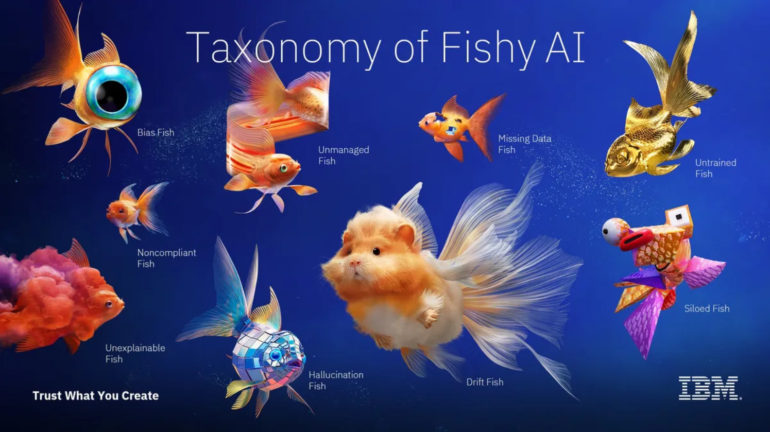- IBM’s “Trust What You Create” campaign warns marketers about the risks of unregulated generative AI in advertising.
- The campaign extends a previous successful collaboration with Adobe Firefly, showcasing AI’s potential negative impacts.
- Visuals depict surreal AI errors, emphasizing the importance of trust and reliability in AI-driven content creation.
- Ogilvy staff’s experiences inform the playful yet informative approach of the campaign.
- The initiative spans traditional and digital advertising channels, including a presence at IBM events and Adobe’s digital summit.
- Despite challenges like job uncertainty, there’s optimism about AI’s potential to enhance the creator economy.
Main AI News:
IBM’s latest campaign, “Trust What You Create,” serves as a stark reminder for marketers and CMOs on the perils of unregulated generative AI. As this technology gains prominence in the advertising realm, IBM aims to educate industry professionals about its potential negative impacts. This initiative builds upon a successful collaboration between IBM and Adobe Firefly, which previously produced social media ads surpassing IBM’s internal benchmarks by 26-fold, as detailed by Jonathan Adashek, IBM’s Senior Vice President of Marketing and Communication and Chief Communications Officer.
Expanding on this theme, the “Trust What You Create” campaign vividly portrays the consequences of AI mishaps. Leveraging tools like IBM WatsonX and Adobe Firefly, clients are encouraged to harness AI’s transformative power while prioritizing trustworthiness and reliability. As exemplified in the campaign, settling for “close enough” when reproducing assets is not acceptable.
Visuals crafted with Adobe Firefly depict AI errors ranging from bias and noncompliance to data mismanagement and hallucinations. Surreal imagery featuring bizarre goldfish with digital aberrations, such as a “drift fish” resembling a hamster with fish fins, conveys the potential pitfalls of generative AI. This creative direction stems from Ogilvy staff’s firsthand experience navigating the complexities and pitfalls of AI-driven content creation.
Denise Zurilgen, Global Executive Creative Director for IBM at the agency, emphasizes the campaign’s playful yet informative approach. By humanizing AI errors, the initiative aims to demystify the technology and highlight its unsuitability for certain brand contexts.
In addition to traditional advertising channels, such as a large-scale out-of-home activation at the Las Vegas Sphere, the campaign extends to IBM’s event presence. Digital posters, tabletop displays, and interactive experiences at Adobe’s digital summit further amplify the message.
As the adoption of generative AI accelerates, marketing organizations confront various challenges, including job displacement and the need for upskilling in martech. Nevertheless, there remains optimism regarding AI’s potential to enhance the creator economy, underscoring the importance of responsible implementation and trustworthiness in AI-driven marketing endeavors.
Conclusion:
IBM’s campaign highlights the urgent need for marketers to approach generative AI with caution, emphasizing the importance of trust and reliability. As the market navigates the complexities of AI-driven advertising, responsible implementation becomes paramount for sustainable growth and innovation.

